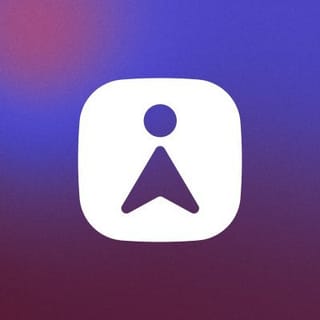
The golden ticket to success and well-being at work is figuring out how to be more productive.
Productivity doesn’t necessarily mean more in less time — it means optimizing your workday to achieve your most important tasks while maintaining a healthy work-life balance.
Whether battling the distractions of social media notifications, overcoming procrastination, or finding that sweet spot in time management, peak productivity is a common goal many share.
This guide offers actionable tips and tricks for transforming your workday, from leveraging productivity apps to mastering the Pomodoro Technique. Learn to quit multitasking, map out your to-do list, and set realistic goals for maximum focus.
Let’s get into it.
What is productivity?
Productivity breeds efficiency. You will achieve your most important tasks in less time, with less stress. Productivity isn’t just doing more things faster.
True productivity means focusing on quality. Not just quantity. You make smart choices with time and energy to enhance your workday and well-being.
At its core, productivity is making your workday work for you- not against you.
This involves strategic planning, prioritizing tasks, and maintaining a balance that prevents burnout. Whether mastering time management or optimizing your workspace, productivity involves a range of practices. All while boosting your output and safeguarding your mental health.
Ultimately, being productive is about working smarter, not harder, to achieve your goals and improve your life.
8 tips for being more productive at work
Boosting productivity at work doesn't have to be complex. Simple, effective strategies will transform your workday. From managing your to-do list to taking strategic breaks, let’s explore proven tips and hacks designed to increase your productivity.
Here are eight productivity tips to get more out of your workday.
1. Quit multitasking
Multitasking might seem like a productivity hack, but it's a myth.
Juggling multiple tasks at once will severely slow you down and reduce the quality of your work.
When you split your attention, none of the tasks gets your entire focus, leading to more errors and longer completion times.
To quit multitasking, start by prioritizing your to-do list. Focus on one task at a time, giving it your complete attention.
This single-tasking approach boosts efficiency and improves the quality of your work. Use tools like the Pomodoro Technique to dedicate specific time blocks to individual tasks. This method helps you stay focused and ensures you're taking regular breaks to recharge.
Embracing this shift will enhance your productivity levels and work quality. Work smarter, not harder. Do one thing well before moving on to the next.
For example, in Superhuman, we coach users using the Inbox Zero methodology, which focuses on triaging emails first before they work on responding to senders. That helps keep you focused on the task at hand: triaging your inbox. Once you are done, you can go back through and methodically reply to emails, knowing those are the highest priority items.
2. Map out your to-do list
A well-organized to-do list is your roadmap to a productive day.
It helps you visualize your tasks, prioritize them, and focus on what needs improvement. Without it, you're basically navigating your workday without direction, and this can open the door to procrastination and overlooked tasks.
Start each day or the night before by listing your tasks. Identify your most important tasks and tackle those first. This ensures that your peak energy levels are devoted to the tasks that matter most.
Break larger tasks into smaller, manageable tasks to avoid feeling overwhelmed.
Using apps or templates will streamline this process, making organizing and updating your tasks easier.
Remember, a to-do list is not set in stone. It's a dynamic tool that should adapt to your day and help you stay on track, not a rigid set of commands.
By mapping out your to-do list, you create a clear plan for your workday, boost your productivity, and feel accomplished.
3. Set realistic goals
Setting realistic goals is key to productivity. Know your limits and plan achievable targets. Unrealistic goals lead to stress and burnout, not success.
Break your work into clear, attainable objectives. Considering your workload and energy levels, focus on a few accomplishments in a workday. This approach boosts morale and motivation as you tick off tasks.
Remember, each small win builds momentum towards larger achievements.
Setting realistic goals keeps you moving forward and makes the most of your workday. You are not just crossing tasks off a list but making meaningful progress.
4. Take breaks as needed
Taking short breaks is not a sign of slacking off. It's a productivity strategy.
Regular breaks refresh your mind and prevent burnout. They boost your energy levels and creativity. They help you tackle tasks with renewed focus.
Try the Pomodoro Technique: work for 25 minutes, then take a five-minute break. After four cycles, take a longer break. This method balances focus with rest, maximizing productivity at the end of the day.
Short, mindful breaks will dramatically improve your productivity. Listen to your body and mind. When you feel fatigue setting in, step away and take a break — a brief pause can sometimes make a huge difference in your workday.
5. Fuel with food
Fueling with the right food is not just great for self-care. It’s crucial for productivity and encourages creating healthy habits.
What you eat affects your energy levels, focus, and overall work performance.
Choose foods that sustain you longer, like whole grains, lean proteins, and fresh fruits and vegetables. Avoid sugar highs and lows that lead to crashes.
Staying hydrated is equally important. Dehydration will lead to fatigue and decreased concentration. Keep a water bottle in your workspace and sip throughout the day.
Eating small, balanced meals or snacks every few hours keeps your metabolism and energy steady.
This strategy helps you maintain peak productivity without the distraction of hunger or the sluggishness that follows a heavy meal. Fuel smart to work smart.
6. Learn time management
Time management is the backbone of productivity. Mastering it means getting more done in less time. Start by identifying your hours of work. Then, determine your peak productivity hours. Plan to tackle your most challenging tasks during these times.
Use time-blocking to allocate specific hours of your day to different tasks. This method helps you focus and prevents overcommitting. Apps and tools will help you track your time, showing where your hours go and how efficiently you are getting things done.
Prioritize tasks daily. Only some things are urgent. Learn to distinguish between what must be done now and what will have to wait, and this clarity saves time and reduces stress.
Good time management is about more than just work. It includes breaks and personal time, ensuring a healthy work-life balance. Manage your time; don't let it manage you.
7. Optimize your workspace
Another productivity hack is optimizing your workspace. A clutter-free, organized environment reduces distractions and increases focus.
Foster office wellness. Start by decluttering. Keep only what you need within reach.
Invest in comfortable, ergonomic furniture. Proper posture prevents fatigue and keeps you focused longer. Personalize your space with items that inspire you, but don’t overcrowd.
Lighting matters, too. Natural light is best, as it improves mood and energy levels. If that’s not possible, choose lighting that reduces eye strain.
Consider noise levels. Some find background noise helpful; others need silence. Use headphones with white noise or calming music if it helps you concentrate.
A well-organized, personalized workspace invites productivity. It will transform how you work and how you feel about your workday.
8. Reduce distractions
To reduce distractions, start by identifying what interrupts your focus. Common culprits include social media, email notifications, and chatty co-workers.
Productive people turn off notifications on their phones and computers. They check emails and messages at designated times instead of constantly throughout the day. This simple change will significantly boost focus.
Create a "distraction list" for sudden thoughts or tasks that pop into your mind. Write them down and return to them later. This keeps you on track without causing you to forget important ideas.
Communicate your need for focus. Let co-workers know when you're in a deep work phase. Use headphones to signal you're not available for casual chat.
Finally, organize your workday around your energy levels. Tackle high-focus tasks during your peak productivity times. Save routine tasks for when your energy dips.
Minimizing distractions lets you work smarter, not harder. It's about creating an environment where you will thrive undisturbed.
Bottom line
Mastering productivity at work is about smart strategies, not longer hours. It's about focusing on one task at a time, organizing your day with a clear to-do list, and setting achievable goals. Remember to take breaks to recharge, fuel your body with nutritious food, manage your time wisely, and create a workspace that inspires focus. Reducing distractions will help you maintain a sharp, productive mindset throughout your workday.
Embracing these habits will transform your work life, boosting your output and well-being. But remember, productivity is a personal journey. What works for one person may not work for another. Find the right balance and tools that fit your lifestyle and work style.
Ready to increase your productivity? Superhuman offers cutting-edge email solutions designed to optimize your workday.
Get started with Superhuman today to make every workday count.




